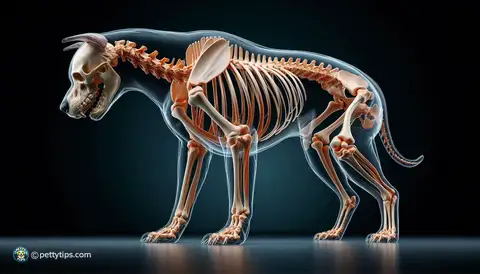
The Vital Role of Bones in a Raw Feeding Regimen
Fabrizio Ferretti - Sep 07, 2024 - 6 min read


The concept of feedingraw food to pets stems from the belief that it mimics the natural diet of their wild ancestors. Advocates argue that raw diets offer numerous health benefits, including shinier coats, healthier skin, improved digestion, and increased energy levels. This movement gained momentum as pet owners sought alternatives to commercially processed pet foods, which often contain additives, fillers, and preservatives.
Many pet owners are drawn to the idea of preparing homemade raw diets for their furry companions. The ability to control the quality and freshness of ingredients is a significant factor driving this trend. Homemade raw diets often include raw meat, bones, organs, and vegetables, providing pets with a diverse array of nutrients.
Proponents of raw food diets tout a range of potential benefits for pets, including improved dental health, reduced allergies, and better weight management. Some advocates claim that raw diets can alleviate certain medical conditions, such as arthritis and gastrointestinal issues. Additionally, supporters argue that raw diets promote a more natural eating experience for pets, as they consume food in its raw and unprocessed form.
One of the primary concerns associated with homemade raw diets is the risk of nutrient imbalances. Without careful planning and supplementation, pets may not receive adequate levels of essential nutrients, such as calcium, vitamins, and minerals. Over time, these imbalances can lead to nutritional deficiencies and health problems.
Achieving nutritional balance in homemade raw diets requires careful attention to ingredient selection and portion sizes. Pet owners must ensure that their pets receive a diverse range of proteins, fats, carbohydrates, vitamins, and minerals. Rotating ingredients and incorporating supplements can help prevent deficiencies and maintain optimal health.
To address nutritional concerns and ensure the health and well-being of pets, it is essential for pet owners to consult with veterinary professionals. Veterinarians can provide guidance on formulating balanced raw diets tailored to individual pets' needs. They may recommend specific supplements or dietary adjustments based on factors such as age, breed, and medical history.
One of the most significant food safety risks associated with raw food diets is the potential for bacterial contamination. Raw meat, particularly poultry and ground meats, can harbor harmful pathogens such as Salmonella, E. coli, and Listeria. These bacteria pose a risk not only to pets but also to the humans who handle and prepare their food.
To mitigate the risk of foodborne illness, pet owners should adhere to strict hygiene and food safety practices when handling raw meat. This includes washing hands thoroughly before and after handling raw meat, as well as disinfecting surfaces and utensils used for preparation. Additionally, storing raw meat separately from other foods and promptly cleaning up any spills can help prevent cross-contamination.
While healthy adult pets may have robust immune systems capable of handling certain levels of bacterial exposure, vulnerable individuals, such as puppies, kittens, and senior pets, may be more susceptible to foodborne pathogens. Pet owners should take their pets' health status into account when deciding whether to feed raw diets and consult with veterinarians if they have concerns about food safety.
One common misconception about homemade raw diets is that they are more affordable than commercial pet foods. While it is true that raw diets can be cost-effective for some pet owners, particularly those who buy ingredients in bulk or source them from local farms, others may find that the expense of high-quality ingredients and supplements outweighs the savings.
Preparing homemade raw diets requires time, effort, and dedication. Pet owners must be willing to research recipes, source ingredients, and invest time in meal preparation. Additionally, maintaining proper hygiene and sanitation practices is essential to prevent foodborne illness. For some pet owners, the convenience of commercially prepared pet foods may outweigh the benefits of homemade diets.
Finding a balance between cost, convenience, and nutritional quality is key to successfully incorporating raw diets into pets' lifestyles. While homemade raw diets offer control over ingredients and freshness, they require commitment and diligence. Pet owners should weigh their priorities and consider consulting with veterinary professionals to determine the most suitable dietary options for their pets.
In conclusion, while homemade raw diets for pets offer potential benefits such as improved nutrition and palatability, they also pose challenges and risks that pet owners must carefully consider. By understanding the origins of the raw food movement, addressing nutritional concerns, mitigating food safety risks, and balancing cost and convenience, pet owners can make informed decisions about their pets' diets. Consulting with veterinary professionals is crucial for ensuring that homemade raw diets are formulated and implemented safely and effectively. Ultimately, the health and well-being of pets should always be the top priority when considering dietary choices.